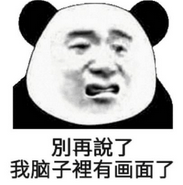兄弟们Python都学的怎么样了?字符串学会了么?

字符串是Python最基本的数据类型,遍布所有Python程序,你要你在用用Python,就都会使用到它。
所以总结了15个最重要的内置字符串方法分享给大家,希望大家能从中找到对自己有帮助的技巧。
1、isalnum()
如果字符串中至少有一个字符并且所有字符都是字母或数字,则返回True,否则返回 False。
s = \'python\' print(s.isalnum()) # True s = \'123\' print(s.isalnum()) # True s = \'python123\' print(s.isalnum()) # True s = \'python-123\' print(s.isalnum()) # False # Python学习交流1群:924040232 # Python学习交流2群:815624229 # 一群满加2群
2、find()
检测指定内容是否包含在字符串中,如果是返回开始的索引值,否则返回-1。
s = \'Machine Learning\' idx = s.find(\'a\') print(idx) print(s[idx:]) # 1# achine Learning s = \'Machine Learning\' idx = s.find(\'aa\') print(idx) print(s[idx:]) # -1# g
此外,还可以指定开始的范围。
s = \'Machine Learning\' idx = s.find(\'a\', 2) print(idx) print(s[idx:]) # 10 # arning
3、count()
返回指定内容在字符串中出现的次数。
n = \'hello world\'.count(\'o\') print(n) # 2 n = \'hello world\'.count(\'oo\') print(n) # 0
4、join()
string.join(seq)。以string作为分隔符,将seq中所有的元素(的字符串表示)合并为一个新的字符串。
list_of_strings = [\'string\', \'methods\', \'in\', \'python\'] s = \'-\'.join(list_of_strings) print(s) # string-methods-in-python list_of_strings = [\'string\', \'methods\', \'in\', \'python\'] s = \' \'.join(list_of_strings) print(s) # string methods in python
5、rsplit()
从右侧开始对字符串进行分隔
s = \'string methods in python\'.rsplit(\' \', maxsplit=1) print(s) # [\'string methods in\', \'python\']
6、Slicing
slicing切片,按照一定条件从列表或者元组中取出部分元素(比如特定范围、索引、分割值)
s = \' hello \' s = s[:] print(s) # hello s = \' hello \' s = s[3:8] print(s) # hello
7、strip()
strip()方法用于移除字符串头尾指定的字符(默认为空格或换行符)或字符序列。
s = \' hello \'.strip() print(s) # hello s = \'###hello###\'.strip() print(s) # ###hello###
在使用strip()方法时,默认去除空格或换行符,所以#号并没有去除。
可以给strip()方法添加指定字符,如下所示。
s = \'###hello###\'.strip(\'#\') print(s) # hello
此外当指定内容不在头尾处时,并不会被去除。
s = \' \\n \\t hello\\n\'.strip(\'\\n\') print(s) # # hello s = \'\\n \\t hello\\n\'.strip(\'\\n\') print(s) # hello
第一个\\n前有个空格,所以只会去取尾部的换行符。
最后strip()方法的参数是剥离其值的所有组合,这个可以看下面这个案例。
s = \'www.baidu.com\'.strip(\'cmow.\') print(s) # baidu
最外层的首字符和尾字符参数值将从字符串中剥离。字符从前端移除,直到到达一个不包含在字符集中的字符串字符为止。
在尾部也会发生类似的动作
8、lstrip()
移除字符串左侧指定的字符(默认为空格或换行符)或字符序列。
s = \' hello \'.lstrip() print(s) # hello
同样的,可以移除左侧所有包含在字符集中的字符串。
s = \'Arthur: three!\'.lstrip(\'Arthur: \') print(s) # ee!
9、rstrip()
移除字符串右侧指定的字符(默认为空格或换行符)或字符序列。
s = \' hello \'.rstrip() print(s) # hello
10、removeprefix()
Python3.9中移除前缀的函数。
# python 3.9 s = \'Arthur: three!\'.removeprefix(\'Arthur: \') print(s) # three!
和strip()相比,并不会把字符集中的字符串进行逐个匹配。
11、removesuffix()
Python3.9中移除后缀的函数。
s = \'HelloPython\'.removesuffix(\'Python\') print(s) # Hello
12、replace()
把字符串中的内容替换成指定的内容。
s = \'string methods in python\'.replace(\' \', \'-\') print(s) # string-methods-in-python s = \'string methods in python\'.replace(\' \', \'\') print(s) # stringmethodsinpython
13、re.sub()
re是正则的表达式,sub是substitute表示替换。
re.sub则是相对复杂点的替换。
import re s = \"string methods in python\" s2 = s.replace(\' \', \'-\') print(s2) # string----methods-in-python s = \"string methods in python\" s2 = re.sub(\"\\s+\", \"-\", s) print(s2) # string-methods-in-python
和replace()做对比,使用re.sub()进行替换操作,确实更高级点。
14、split()
对字符串做分隔处理,最终的结果是一个列表。
s = \'string methods in python\'.split() print(s) # [\'string\', \'methods\', \'in\', \'python\']
当不指定分隔符时,默认按空格分隔。
s = \'string methods in python\'.split(\',\') print(s) # [\'string methods in python\']
15、upper()
将字符串中的字母,全部转换为小写。
s = \'SIMPLE IS BETTER THAN COMPLEX\'.lower() print(s) # simple is better than complex
兄弟们,今天的分享就到这里,大家学废了吗?
学习难,难在坚持!与诸君共勉!加油!

来源:https://www.cnblogs.com/hahaa/p/15982186.html
本站部分图文来源于网络,如有侵权请联系删除。
 百木园
百木园